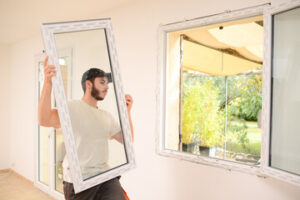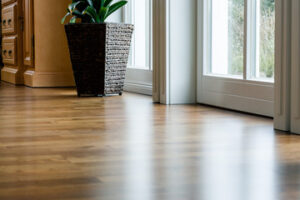When it comes to Window Replacement, value for money is the key. This means looking for windows that have a variety of options and styles that match your vision for your home.

Look for windows that offer wood-clad interiors and exteriors. These are more durable and energy-efficient than aluminum-clad frames. Contact Your Home Exterior Solutions for professional assistance.
A well-chosen window replacement project can boost curb appeal and increase energy efficiency. It can even add value to the home. The key to a successful outcome is working with a trusted company. However, with so many companies out there, determining which one to choose can be difficult. To narrow down the options, homeowners should consider several important factors when choosing a window replacement company.
Before a homeowner hires a window replacement company, they should first check online reviews and ratings. This can help them determine the company’s level of customer service and satisfaction. Homeowners should also look for a comprehensive warranty that protects their investment.
Once they’ve narrowed down their choices, homeowners should ask potential window replacement companies for references. This can be done in person or via a virtual meeting. A top-rated window replacement company will happily provide a list of satisfied clients, along with contact information. They may also have a map or photos of past projects, so homeowners can see the work for themselves.
A reputable window replacement company will also be transparent about their pricing. They should clearly explain what’s included in their base price, and what will be an additional charge. This will prevent surprises and ensure a smooth installation process. Homeowners should also inquire about any additional services, such as hauling away and disposing of existing windows, or any special options like glass or hardware.
Additionally, a top-rated window replacement company will be able to accommodate the needs of their customers. For example, they will be able to offer a variety of frame materials and window types, including single- and double-hung windows, picture windows, and sliding doors. They should also have a wide range of colors, finishes, and hardware options, to help homeowners find the perfect match for their homes.
Finally, a top-rated window replacement company should have a comprehensive warranty that covers both products and workmanship. They should also offer a money-back guarantee, as well as free professional installation. These extras can make the difference between a satisfactory experience and one that’s less than ideal.
Warranty
The warranty offered by the company is one of the most important aspects to consider when choosing a window replacement company. A good warranty should include both frame and glass coverage, as well as installation and labor coverage. It should also have a transferable option so that it can be used by future homeowners in case they decide to sell their home.
Usually, warranties have specific timeframes or other restrictions. It’s important to read the fine print carefully and understand what’s covered by each section. You should also look for loopholes or exclusions that could reduce your coverage. For example, some warranties may exclude natural disasters, airborne pollutants, or accidental damage to the windows. A good company should offer a warranty that is easy to understand and clearly defines its terms and conditions.
Lifetime warranties are a great way to ensure that your replacement windows will last for a long period of time. However, it’s important to understand what exactly is included in a lifetime warranty before signing a contract. For instance, a lifetime warranty may only cover manufacturing defects. However, it will not cover natural disasters, or any damage caused by accident or misuse of cleaners.
In addition, you should check whether the company offers a double lifetime warranty. This type of warranty will give you window coverage for as long as you own your home, and it can be transferred to the next homeowner. This is a great way to add value to your home, and it will also make it easier for you to sell the house in the future.
Another thing to look for in a window warranty is if the company is reputable. If a company is new, you should be skeptical about their warranty. A reputable company will be in business for many years, so you can trust that they will still be around when you need to claim a warranty. Additionally, a reputable company will stand by their products and provide excellent customer service. It will also be willing to negotiate the price of a replacement window.
Budget
If you’re in the market for replacement windows, there are a few things to keep in mind. The first is to shop for a window company with a long history of success and a good reputation. A reputable window manufacturer will use only the highest quality materials, and their windows are likely to perform better over time than cheaper models. In addition, you’ll want to consider the energy efficiency of your windows. Energy efficient windows are more expensive than traditional models, but they can save homeowners money in the long run by lowering their energy bills.
Window companies typically offer a variety of window styles and frame materials, so you’ll need to decide which features are most important for your project. For example, you may prefer the look of wood windows, but they’re usually more expensive than fiberglass or vinyl models. You’ll also need to choose a type of installation, such as pocket or full-frame installations. Pocket installations are less costly but may not be suitable for certain types of frames, such as those with rot or significant damage. Full-frame installations are more expensive but can provide a more aesthetically pleasing and durable solution.
Another factor that will affect the cost of your windows is their size. Larger windows will be more expensive than smaller ones because they require more materials and labor to install. You’ll also need to consider other options, such as whether you’d like to add blinds or shades to your new windows. These additions can increase the price of your windows by a few hundred dollars or more. You’ll also need to think about whether you want to incorporate any additional energy-efficient upgrades into your project, such as weather stripping or insulation. These upgrades can add up to $3 to $20 per window, but they may reduce your energy bills over time.
Other costs that can add up include sales tax, shipping fees, and permit or inspection charges. Depending on your location, you may also need to pay for hazardous waste removal or environmental testing services. Additionally, you’ll need to budget for the cost of labor, which can vary widely based on your location and the complexity of the job. Finally, you should always negotiate a price with the window company before finalizing your purchase. Most reps expect some haggling, and you have nothing to lose by asking for a lower price.
Installation
Window replacement is a relatively quick project that typically requires less labor and material than a full-frame window installation. However, homeowners should take steps to prepare their homes for the work that will be done by the installers. These preparations include covering furniture and cleaning the areas that will be affected by the renovation. They should also make sure that they have a clear path for the installers to use, and they should move lawn equipment and other items that could get in their way. Canvas runners and tarps can be used to protect the floor from any debris that is produced by the installation process.
The first step in the window installation process is to remove the old window sashes and frames. The contractors will heat the caulking that holds the windows in place with a handheld blow torch so that it becomes flexible and easy to remove. The contractors will then clean the area where the previous sealant was so that the new window can adhere properly to the framed opening.
Once the frame is prepared, the contractor will test-fit the new window. They will use a carpenter’s square and torpedo level to ensure that the window is installed both level and plumb. If necessary, shims will be added or removed to correct the problem.
After the new window is in place, the contractor will caulk around the perimeter to create a water-resistant seal. They will also put a bead of exterior window caulk on the exterior casings or blind stops, and they will apply two continuous beads of caulk along the windowsill. Then, they will add or remove shims as needed to ensure that the window is snugly in place and is not touching any trim.
Before the final caulking, the installers will test-fit the sash to make sure that it is both level and plumb. If it is not, they will shim it until it is. They will then install the sash in the frame and screw it in place. They will also install shims behind the jambs to account for any gaps that may be present.
